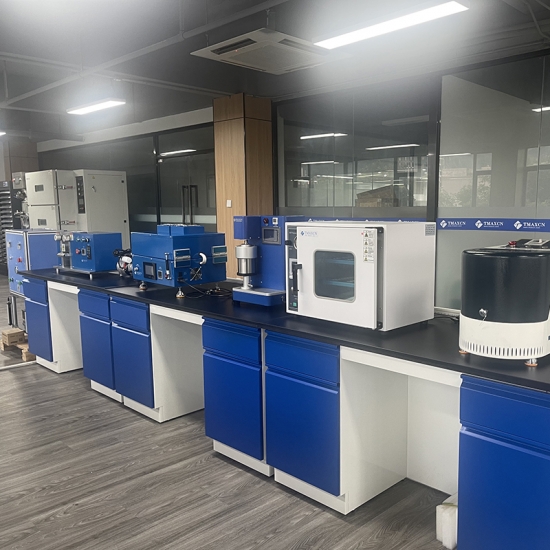Lith Corporation, founded in 1998 by a group of material science doctor from Tsinghua University, has now become the leading manufacturer of battery lab&production equipment. Lith Corporation have production factories in shenzhen and xiamen of China.This allows for the possibility of providing high quality and low-cost precision machines for lab&production equipment,including: roller press, film coater,mixer, high-temperature furnace, glove box,and complete set of equipment for research of rechargeable battery materials. Simple to operate, low cost and commitment to our customers is our priority.
Button Cell Equipment: Overview, Types, and Applications
Button cells, also known as coin cells, are small, flat batteries widely used in portable electronic devices and research applications. The fabrication of button cells requires specialized equipment to ensure precision, safety, and consistency in the manufacturing process. In this article, we will explore the various types of equipment used in button cell production, their functions, and their importance.
●What Is Button Cell Equipment?
Button cell equipment refers to the tools, machines, and systems used to fabricate, assemble, and test button cells. These devices enable manufacturers and researchers to produce high-quality, reliable button cells with consistent performance. The equipment is designed to handle sensitive materials, maintain controlled environments, and streamline the assembly process.
●Key Types of Button Cell Equipment
1. Material Preparation Equipment
Mixer: Used to prepare electrode slurries by homogenizing active materials, conductive additives, and binders.
Example: Planetary mixer or ultrasonic homogenizer.
Dispenser: Accurately measures and dispenses electrolyte solutions into the cell during assembly.
Drying Oven: Removes solvents from coated electrodes under controlled temperature and vacuum conditions.
2. Electrode Coating and Cutting Equipment
Coater: Applies electrode slurry onto current collector foils (e.g., aluminum for cathodes, copper for anodes).
Techniques: Doctor blade coating, slot die coating, or spray coating.
Die Cutter: Punches out circular electrode discs from dried sheets with high precision.
Press: Compacts electrode discs to improve density and electrical conductivity.
3. Assembly Equipment
Glovebox: Provides a controlled atmosphere (e.g., inert gas like argon or nitrogen) to protect sensitive materials like lithium metal from moisture and oxygen.
Coin Cell Crimper: Assembles and seals the button cell components (cathode, separator, anode, electrolyte) into the metal casing.
Automatic Assembly Machine: For large-scale production, automates the entire assembly process, including material handling, alignment, and crimping.
4. Testing and Characterization Equipment
Electrochemical Workstation: Measures key performance metrics such as capacity, voltage profile, and cycling stability.
Impedance Analyzer: Evaluates internal resistance and impedance characteristics of the button cell.
Temperature Chamber: Tests the cell's performance under varying temperature conditions.
Leakage Tester: Detects any electrolyte leakage to ensure the integrity of the seal.
X-ray Imaging System: Inspects the internal structure of the button cell for defects or misalignments.
5. Safety and Environmental Control Equipment
Fume Hood: Safely handles volatile solvents and electrolytes during the fabrication process.
Waste Management System: Properly disposes of hazardous materials, such as used electrolytes and electrode scraps.
Humidity-Controlled Room: Maintains low humidity levels to prevent moisture contamination of sensitive materials.
●Functions of Button Cell Equipment
1. Material Handling:
Ensures precise mixing, coating, and cutting of electrode materials.
2. Environmental Control:
Protects sensitive materials from moisture, oxygen, and other contaminants.
3. Assembly Precision:
Achieves accurate alignment and sealing of cell components.
4. Performance Testing:
Evaluates the electrochemical properties and long-term stability of the button cell.
5. Automation:
Increases throughput and reduces human error in large-scale production.
Coin Cell Laboratory Equipment
●Importance of Button Cell Equipment
1. Consistency:
Ensures uniform thickness, composition, and performance across all fabricated cells.
2. Safety:
Handles hazardous materials safely, minimizing risks to operators and the environment.
3. Scalability:
Enables transition from laboratory-scale prototyping to industrial-scale manufacturing.
4. Cost-Effectiveness:
Reduces material waste and improves efficiency through automation and optimization.
●Applications of Button Cell Equipment
1. Research and Development:
Used in laboratories to test new battery materials, chemistries, and configurations.
2. Consumer Electronics:
Produces button cells for watches, calculators, remote controls, and medical devices.
3. Medical Devices:
Supplies power for implantable devices like pacemakers and hearing aids.
4. IoT and Smart Devices:
Powers sensors, wearable devices, and wireless communication modules.
●Challenges in Button Cell Equipment
1. Material Sensitivity:
Requires strict environmental control to handle reactive materials like lithium metal.
2. Uniformity:
Ensuring consistent quality across large batches can be challenging, especially for solution-based processes.
3. Leakage Prevention:
Proper sealing is critical to prevent electrolyte leakage, which can compromise performance and safety.
4. Scalability:
Transitioning from small-scale prototyping to mass production requires significant investment in automated equipment.
●Future Trends in Button Cell Equipment
1. Solid-State Battery Fabrication:
Develop equipment for producing solid-state button cells, which offer improved safety and energy density.
2. Advanced Automation:
Integrate robotics and AI-driven systems to enhance precision, speed, and cost-effectiveness.
3. Sustainability:
Focus on eco-friendly materials and recycling processes to reduce the environmental impact of button cell production.
4. Miniaturization:
Design smaller, thinner button cells for next-generation wearable and implantable devices.
●Conclusion
Button cell equipment plays a vital role in the fabrication, assembly, and testing of these compact power sources. By using specialized tools and systems, manufacturers and researchers can produce high-performance button cells with consistent quality and reliability. As advancements in materials and technologies continue, the evolution of button cell equipment will drive innovation in energy storage and power solutions.
What aspect of button cell equipment excites you most? Share your thoughts below! Together, let’s explore how these tools are shaping the future of portable energy solutions.

 ONLINE
ONLINE +86 13174506016
+86 13174506016 Louis@lithmachine.com
Louis@lithmachine.com +86 18659217588
+86 18659217588
 18659217588
18659217588